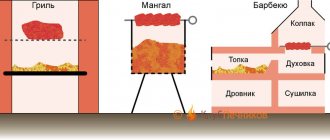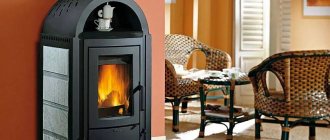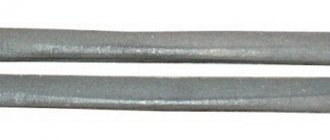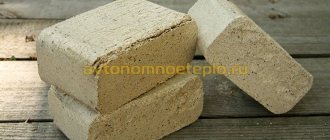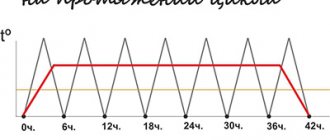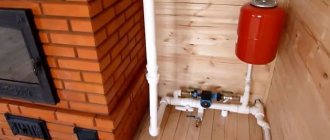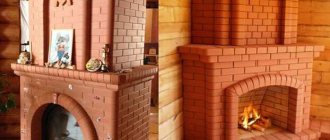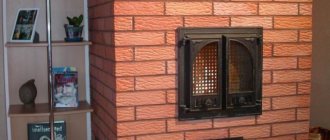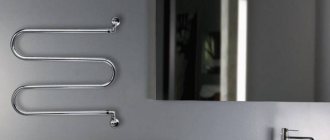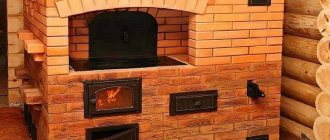“Long-burning stoves” is a case where the name speaks for itself! In such stoves, wood burns for six, eight, or even twelve hours, well, isn’t that great! But every coin, as they say, has two sides, which we will consider further. Let us immediately note that there is no need to confuse long-burning stoves (for example, “Buleryan” or “Breneran”) and stoves with a long-burning function (we wrote about this function earlier in the article “Choosing a wood-burning stove for a home.”) Now we will talk specifically about stoves in which long-term burning is the principle of operation, and not just an additional function.
To clearly understand the pros and cons of long-term combustion, it is necessary to understand how the process itself occurs and what depends on what.
Rating of long-burning stoves
When compiling the review, models of Russian and foreign production were studied. Technical parameters, efficiency, functionality and complexity of maintenance were studied. User reviews and the opinions of heating engineers were taken into account. The main attention was paid to the following parameters:
- Power – affects the maximum heated area;
- Design – closed models and fireplaces are produced;
- Material – must withstand high temperatures;
- Doors – translucent, transparent and opaque;
- Functionality - can be equipped with automation, hob, heat exchanger.
Low level of safety, thin body material, poor efficiency - equipment with such defects were excluded from our rating.
The best long-burning cast iron wood stoves
Cast iron models have a high heat capacity: they heat up quickly but cool down slowly. The material is resistant to corrosion and high temperatures. The service life of the equipment exceeds 50 years. Disadvantages include high price and heavy weight: some models will require reinforcement of the floor base for installation.
NMK Sibir
Made of gray cast iron, which is characterized by increased strength and wear resistance. The thickness of the housing walls reaches 10 mm, which ensures long-term heat transfer after combustion is completed. The installed flame arrester protects the chimney and increases efficiency. Cast iron grates do not require replacement during operation.
The model is intended for heating rooms of 45-50 sq.m., can be used for cooking. The hob is equipped with cast iron burners of different diameters. Panoramic door with heat-resistant glass. The heat-resistant cord provides a high level of compaction and tightness of the combustion chamber. Firewood and briquettes can be used as fuel.
Advantages:
- Availability of a built-in chimney;
- Self-cleaning glass;
- Original design;
- Light weight.
Flaws:
- The metal ash box does not fit tightly.
Invicta Mesnil
The heating equipment of the French company is made of cast iron, resistant to temperature deformation. The door is equipped with self-cleaning glass made in Germany. The locking handle ensures the tightness of the firebox, increasing the level of safety. The secondary afterburning function increases efficiency and allows you to work on one load for up to 8 hours.
The vertical format model saves usable space and is easy to install. It is installed on an oval-shaped stand, which adds sophistication to the design. The power of the heating device allows the equipment to be used to heat a room with an area of up to 100 sq.m. The main type of fuel is firewood or briquettes.
Advantages:
- Durable gray cast iron;
- Extended manufacturer's warranty 5 years;
- Island location;
- Large glass area.
Flaws:
- There is no hob.
Kratki Koza/K9
The body is made of gray cast iron 200 class, resistant to elevated temperatures and wear. The material provides good heat transfer and soft, comfortable warmth. The power of the equipment is adjustable in the range from 6 to 13 kW, the fireplace can be used to heat a room of 100 sq.m.
The door is equipped with heat-resistant ceramic glass to control the burning of firewood. Secondary combustion technology ensures high efficiency and fuel economy. The supply air can be adjusted to a comfortable temperature. Heated air is used for secondary combustion. The power of the equipment is increased with the help of a cast iron deflector. Maintenance is simplified due to the installation of a retractable ash drawer and a sliding grate.
Advantages:
- Toothed barrier to protect against falling firewood;
- Decorative back panel;
- Manufacturer's warranty 5 years;
- Vertical chimney.
Flaws:
- Not detected.
Simple DIY solid fuel Dutch oven
The first laying out is done without mortar - this way you can eliminate errors and check the implementation of the main components of the structure.
Dutch oven
Materials and tools:
- clay based solution,
- sand,
- fire bricks,
- grate,
- polyethylene, roofing felt,
- metal pipe, sheet steel,
- fire door,
- mallet,
- building level,
- rubber hammer,
- Master OK.
First, roofing felt is laid, it is covered with a layer of sand, leveled, and the horizontalness is checked using a level. 12 bricks are laid, the first row is filled with mortar (clay and water), then sand is added to the mixture. Insert and fix the blower door, after 2 rows - the grate.
As the order is completed, the combustion door is installed, and the geometry of the corners is checked at each stage. The upper rows are slightly shifted back and reinforced with asbestos cord. The chimney and damper are also sealed with this material. The gap remaining at the base of the structure is covered with a sheet of metal.
After the solution has completely dried, the furnace is tested: paper is set on fire in the firebox and the draft is checked. The structure is usually whitewashed so that it looks decent in the interior of the room; it is worth laying out the front part with fire-resistant tiles.
The best long-burning stoves with a water circuit
The easiest way to ensure uniform heat distribution in the house is to install a water heating system. Radiators are connected using pipes through which coolant circulates to a source of thermal energy. Its role can be played by a long-burning furnace with a water circuit, which can easily replace a solid fuel boiler. The difference between these models and conventional stoves is the presence of a heat exchanger.
Stoker 120 Aqua-C
A universal model that can be used as a backup heating device for a home with an area of 60 sq.m. A special feature of the design is the presence of a water jacket for connecting the battery and the possibility of additional installation of a heating element. The firebox ensures complete combustion of fuel due to the combustion of gases. Working time on one bookmark is up to 6 hours.
A door with heat-resistant glass will allow you to control the combustion process. Fine-tuning the power helps create a comfortable atmosphere in the home. The design of the housing makes it possible to increase efficiency due to the convection effect. The fins increase heat transfer and improve air circulation. The model is characterized by a high rate of heating of the room.
Advantages:
- Increased volume ash pan;
- Hob;
- Precise adjustment with microslides;
- Economical.
Flaws:
- Not detected.
Guca Lava Thermo
The Serbian company offers an inexpensive option for the heating system of a house with an area of up to 90 sq.m. The model is made of gray cast iron and boiler steel and has good heat transfer. The flue gas afterburning system has increased efficiency to 78%, thanks to which fuel is consumed economically and heating occurs quickly. Two air flow regulators help you fine-tune the room temperature. You can change the power for both primary and secondary afterburning.
Door with glass that can withstand high temperatures. The water circuit for connecting radiators ensures rapid heating of the coolant. The hob may have one or two burners. This makes it possible to use the oven for cooking.
Advantages:
- Good heat dissipation;
- Spacious ash drawer;
- Comfortable handles made of heat-resistant material;
- Vertical chimney.
Flaws:
- The paint takes a long time to burn during the first fires.
Ecofireplace Bavaria Prismatic
The Russian company offers to buy a model with a water circuit for owners of cottages with an area of up to 130 sq.m. The equipment is made of heat-resistant boiler steel and gray cast iron. The firebox is lined with cast chamotte to increase its service life. The body is lined with tiles. A French-made hob allows you to cook food.
The heating device has one of the highest efficiency in its class - 80%. This is achieved through a secondary combustion system with a constant air supply. Power is adjustable in the range from 9 to 16 kW. One stack of firewood or briquettes can work for up to 5 hours. The door with heat-resistant self-cleaning glass has a large glass area.
Advantages:
- Volumetric firebox for large logs;
- Adjustable clear glass;
- Slide valve with rigid rod;
- Side opening door for added safety.
Flaws:
- Heavy weight.
Advantages and disadvantages of furnaces
The advantages of such equipment include:
- economic benefit, fuel availability;
- safe operation is based on the presence of draft and outflow of exhaust gases from the room, since the operation of the gas generator is based on the influx of air masses;
- ease of maintenance and operation, long-term operation with a full fuel load;
- compactness, modern design, thanks to which the stoves can be installed in any room where they can become an excellent addition to the interior;
- ovens are compact and light in weight;
- there is no need to build a foundation for them;
- efficiency indicators are very high - 75-80%;
- one fill of fuel allows the stove to operate for up to 10 hours;
- fuel is consumed very efficiently and economically;
- the ability to regulate the combustion level;
- while adding new fuel, combustion processes can not be interrupted;
- these stoves will last you a lifetime (cast iron models can be used for more than 50 years);
- ideal ratio of low cost and excellent quality;
- the impact of combustion emissions on nature is minimal.
Flaws:
- an effective smoke exhaust system is required;
- inability to clearly control the temperature;
- rapid heating, as a result of which the air in the greenhouse can become dry.
How to choose a long-burning stove
Technical characteristics will help you choose long-burning wood-burning stoves for a summer house, country house or workshop. It is necessary to pay attention to the power, weight, size of the combustion chamber, and the material used. Depending on the goals, the design and functionality of the equipment plays a role. It wouldn’t hurt to study reviews about the company that produces heating equipment. Only in this case can you buy equipment that can last for several decades.
Power
It is the main criterion when choosing thermal equipment. The power of the device must correspond to the heated area. One kilowatt of energy is enough to heat 6-8 sq.m. There is no point in buying a more powerful device for a small house: the room will always be hot, and fuel consumption will not be rational. Insufficient power will lead to the fact that the heat will only be near the stove. This will create discomfort and may have a negative impact on the condition of the house, for example, mold may appear in the corners.
Design
All heating equipment in this class is divided into two types - without a heating circuit and with a heat exchanger. The inability to connect an external heat accumulator or radiator system allows the design to be simplified. Such models have a low price, light weight, and take up little space. The presence of a heat exchanger increases the cost, but allows you to create more comfortable conditions in the house and use fuel more efficiently.
The devices are available with single or double afterburning. In the second case, there is another combustion chamber, the fuel for which is the gases released during the combustion process. Double afterburning helps increase efficiency and operating time on one burner.
Material
They produce heating equipment from steel and cast iron. Steel models are lightweight and have a low price, but their service life greatly depends on the quality of the metal. Structural or boiler steel has increased heat resistance. When used for a long time, the housing does not leak; they remain airtight. Cast iron models have a high price, but this is compensated by a service life of more than 50 years. The material releases heat slowly, making the heating soft and comfortable. Cast iron does not rust, structures made from it do not change geometry. A disadvantage for some homeowners may be the heavy weight of products made from this material.
Functionality
The heating device can be used for cooking. To do this, its functionality must be expanded by installing a hob. Wood-burning stoves with heat-resistant glass doors can replace a fireplace. To adjust the temperature, the manufacturer can install valves that will help regulate the microclimate in the house. Some companies produce heating equipment, where automation is responsible for this process. Using this equipment is as simple and comfortable as possible.
Principle of operation
The operation of these heating devices is based on the process of smoldering or, in scientific terms, gas generation. Their combustion chamber consists of two compartments:
- For burning wood. The fuel is heated and burned as if over a slow fire; to ensure this process, a strictly defined amount of oxygen is supplied to the furnace, which allows you to control the rate of combustion and the release of the necessary combustible gases.
- For burning off gas. In this compartment, the pyrolysis gas released during the first stage of heating the wood burns under the influence of high temperatures.
This two-stage combustion system allows you to save fuel, and special convectors distribute the generated heat throughout the room in which the wood heating stove is located.
These devices are perfect for heating rooms where there is no permanent heating system, for example, in a country house or country house. This is due to the fact that even with a long absence of heat and heating of the stove, they will ensure heating of the room in half an hour. At the initial stages of heating, when the house is still cold, the heating device operates in intensive mode and produces maximum heat; when the temperature reaches the set values, it goes into smoldering mode and maintaining the existing temperature conditions.
Which long-burning stove is better?
It is not possible to choose a universal option: heating equipment is used in homes and commercial real estate with different usable areas. The models differ in their functionality, which is not always in demand by property owners. The VyborExperta.ru team recommends taking into account the scope of application and advises paying attention to the following brands:
- TMF Fire-battery 7 – for a country house;
- Rainbow PO-1 – for a small greenhouse or garage;
- Vesuvius AOGT 00 – choice of the workshop owner;
- Invicta Mesnil - for a small country house;
- Stoker 120 Aqua-C is a good backup heat source;
- Eco-fireplace Bavaria Prismatic is the choice of the owner of a cottage located in the forest.
All the presented samples deserve attention, but only the most efficient and functional stoves from our review received the title of best in their categories.
